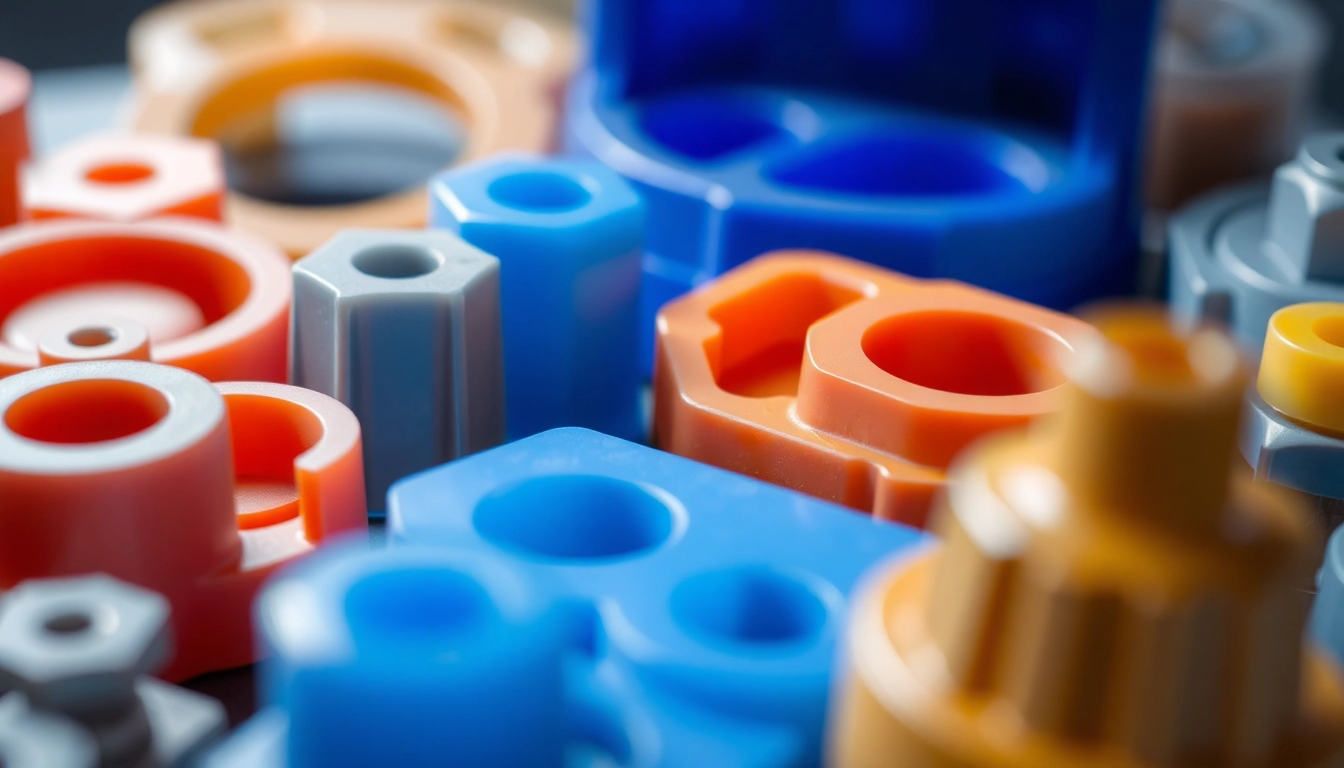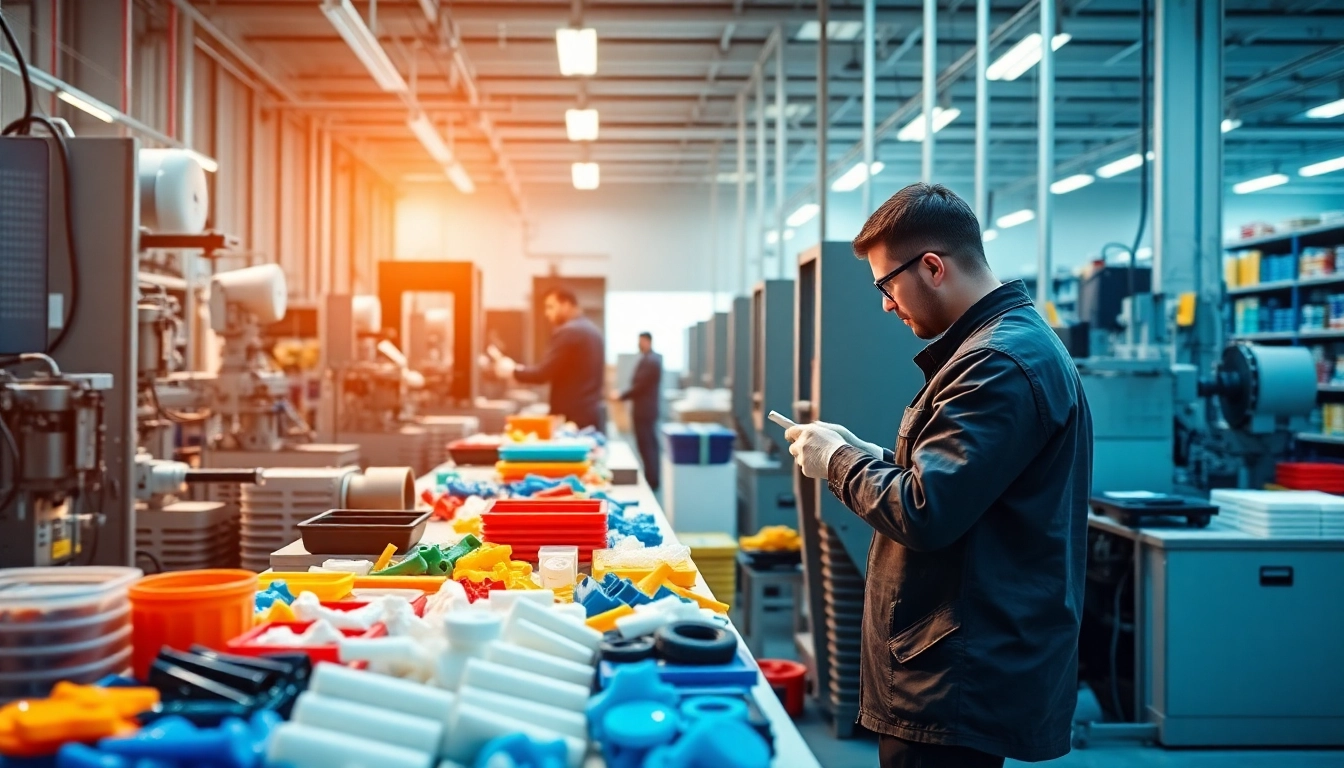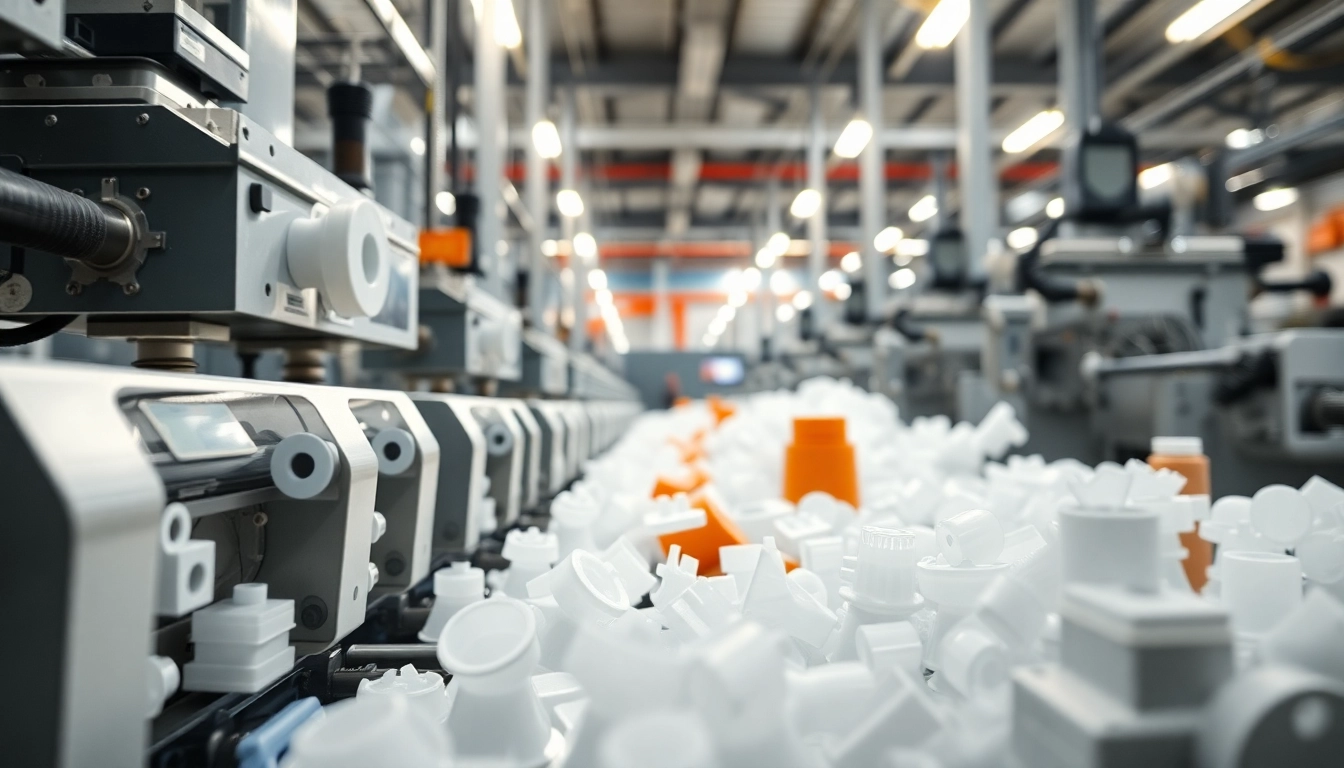Understanding Injection Molded Parts
What Are Injection Molded Parts?
Injection molded parts are items produced through the injection molding process, a highly efficient manufacturing method that involves injecting molten material—commonly plastic—into a mold. This process allows for the creation of complex shapes and dimensions with high precision, making it suitable for producing a wide range of products across various industries. The design of injection molded parts begins with a prototype or CAD model, which is then used to fabricate a mold. Once the mold is complete, raw materials are heated until they are pliable and injected into the mold cavity under high pressure. Once cooled, the material hardens, taking the shape of the mold, and after ejection from the mold, the product is ready for use or further processing.
This technique is prominently employed in the production of injection molded parts, allowing manufacturers to achieve consistent quality and intricate details necessary for modern applications.
Applications of Injection Molded Parts in Industries
Injection molded parts find applications in a multitude of industries including, but not limited to:
- Automotive: Components like dashboards, bumpers, and internal trims are produced using injection molding due to its ability to create lightweight yet durable parts.
- Consumer Electronics: Many electronic housings, casings, and components such as switches and connectors are manufactured through this method.
- Medical Devices: Injection molded parts ensure the sterile and precise production of medical instruments and packaging for pharmaceuticals, adhering to strict regulations.
- Household Products: Common items, including kitchen gadgets, containers, and toys, are often created using injection molding, providing both functionality and aesthetic appeal.
- Aerospace: Lightweight and high-strength components for aircraft and spacecraft are produced, optimizing performance and fuel efficiency.
Key Benefits of Using Injection Molded Parts
The injection molding process offers numerous advantages that make it the preferred choice for manufacturers:
- High Efficiency: The automated process leads to faster production rates, minimizing labor costs and lead times.
- Cost-Effectiveness: Although the initial investment in mold creation can be high, the per-unit cost decreases significantly with scale.
- Design Flexibility: Complex geometries that would be challenging to produce through other methods can be easily achieved.
- Material Versatility: A wide array of materials, including various plastics and metals, can be used in the injection molding process.
- Minimal Waste: The process is efficient as excess material can often be recycled, reducing the environmental impact.
Design Considerations for Injection Molded Parts
Essential Design Principles for Injection Molding
Designing for injection molding requires a strong understanding of the principles that guide the process. Key considerations include:
- Draft Angle: Parts should incorporate a draft angle of 1-3 degrees to ease removal from the mold.
- Wall Thickness: Consistent wall thickness is crucial to prevent issues like warping and sink marks. A general guideline is to keep wall thickness between 1-5mm.
- Radii and Fillets: Sharp corners should be avoided in designs, replaced with radii to reduce stress concentrations and enhance part longevity.
- Features and Tolerances: Identify critical functional features early in the design to ensure they meet required tolerances during production.
Common Design Mistakes to Avoid
While designing injection molded parts, several common pitfalls can affect the quality and manufacturability:
- Ignoring Material Behavior: Failing to account for material shrinkage and flow may lead to dimensional inaccuracies.
- Insufficient Mold Venting: Inadequate venting can result in trapped air, leading to defects like bubbles or voids in parts.
- Overly Complex Designs: Too intricate designs may increase mold complexity and cost unnecessarily. Simplifying designs can enhance manufacturability.
- Inappropriate Material Selection: Choosing the wrong material can impact part performance. Consider factors such as strength, flexibility, and temperature resistance.
Tools and Software for Designing Injection Molded Parts
Utilizing the right tools and software can significantly enhance the design process. Popular software includes:
- CAD Software: Programs like SolidWorks and Autodesk Inventor allow engineers to create detailed 3D models.
- Simulation Tools: Software such as Moldflow or Simpoe can predict how actual parts will behave during molding, enabling engineers to make necessary adjustments before production.
- 3D Printing: Prototyping through 3D printing helps verify designs before committing to costly molds.
The Injection Molding Process
Step-by-Step Overview of the Injection Molding Process
The process of creating injection molded parts can be broken down into several critical steps:
- Material Preparation: Raw plastic pellets are fed into the hopper, heated, and melted.
- Injection: The molten plastic is injected into the mold cavity at high pressure.
- Cooling: The material cools and solidifies in the mold, taking its shape.
- Ejection: Once cooled, the mold opens and ejector pins release the finished part.
- Trimming and Finishing: Excess material is trimmed, and surface finishing processes may be applied to achieve desired aesthetics.
Types of Injection Molding Techniques
Several variations of injection molding techniques exist, each suited to different applications:
- Conventional Injection Molding: The most commonly used method, suitable for general-purpose production.
- Gas-Assisted Injection Molding: Uses gas to create hollow parts, reducing weight and material costs.
- Thin Wall Injection Molding: Involves creating parts with very thin walls, often used in packaging.
- Multi-Shot Injection Molding: Incorporates multiple materials or colors in a single mold cycle, providing aesthetic versatility.
Quality Control Measures for Injection Molded Parts
Ensuring quality in injection molded parts is vital for functionality and durability. Common quality control measures include:
- Visual Inspection: Regular visual checks during production to catch defects early, such as surface blemishes or color inconsistencies.
- Dimensional Testing: Utilizing calipers and gauges to ensure parts meet specified dimensions.
- Physical Testing: Conducting tensile, compression, and impact tests to validate material performance.
- Statistical Process Control (SPC): Monitoring production data to identify trends and variations that may affect quality.
Challenges in Injection Molding and Solutions
Common Issues with Injection Molded Parts
Several challenges may arise during the production of injection molded parts:
- Warpage: Distortion of parts due to uneven cooling can lead to functional and aesthetic issues.
- Flash: Excess material that seeps out of the mold can cause difficulties in finishing and assembly.
- Bubbles and Voids: Trapped air during the injection process can create internal defects, impacting part integrity.
- Color Variability: Inconsistent coloring can affect product branding and marketability.
Best Practices for Overcoming Injection Molding Challenges
To address the challenges of injection molding, manufacturers can adopt best practices:
- Optimizing Mold Design: Ensure proper venting and cooling channels are included to minimize warpage and trapped air.
- Implementing Robust Quality Control: Regular inspections and testing to catch defects early and adjust processes accordingly.
- Material Selection: Choosing materials that provide better thermal stability and flow characteristics can mitigate defects.
Innovative Solutions in Injection Mold Design
Advancements in technology have led to innovative solutions in the design of injection molds.
- Additive Manufacturing: 3D printing allows for rapid prototyping of complex mold designs that traditional methods cannot easily produce.
- Smart Molds: Integration of sensors in molds can provide real-time data on pressure and temperature, enhancing process control.
- Modular Molds: These allow for quick changes and adaptations in design within the same mold structure, reducing downtime.
The Future of Injection Molded Parts
Emerging Trends in Injection Molding Technology
As industries evolve, several trends are shaping the future of injection molding:
- Bioplastics: Increasing emphasis on sustainable products has raised the demand for biodegradable and recyclable materials in injection molding.
- Smart Manufacturing: Industry 4.0 is influencing automation, data exchange, and IoT integration, enabling greater efficiency and reduced human error.
- Customization: The need for customized products is pushing the transition from mass production to on-demand production facilitated by advanced molding technologies.
Impact of Automation on Injection Molded Parts Production
The rise of automation is transforming the injection molding landscape:
- Enhanced Efficiency: Automated systems reduce cycle times and increase output, positioning businesses to meet higher demand.
- Reduction in Labor Costs: Automation minimizes the need for manual intervention in production, leading to lower operational costs.
- Quality Consistency: Automated processes offer higher precision and repeatability, mitigating risks of human error.
Environmental Considerations in Injection Molding
With growing awareness of environmental issues, the injection molding industry is focusing on sustainable practices:
- Energy Efficiency: Implementing energy-efficient machinery can significantly reduce carbon footprints during production.
- Material Recycling: Reusing scrap material and incorporating recycled content into new parts is being encouraged to reduce waste.
- Sustainable Sourcing: Preference for materials sourced from renewable resources is rising, especially in consumer-conscious markets.



